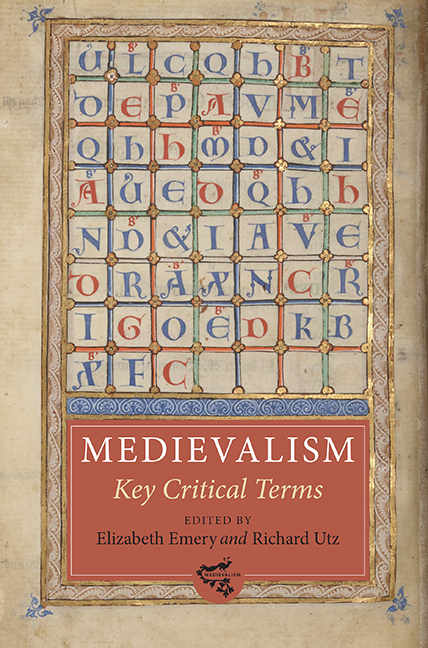Book contents
- Frontmatter
- Dedication
- Contents
- List of Illustrations
- List of Contributors
- Making Medievalism: A Critical Overview
- 1 Archive
- 2 Authenticity
- 3 Authority
- 4 Christianity
- 5 Co-disciplinarity
- 6 Continuity
- 7 Feast
- 8 Genealogy
- 9 Gesture
- 10 Gothic
- 11 Heresy
- 12 Humor
- 13 Lingua
- 14 Love
- 15 Memory
- 16 Middle
- 17 Modernity
- 18 Monument
- 19 Myth
- 20 Play
- 21 Presentism
- 22 Primitive
- 23 Purity
- 24 Reenactment
- 25 Resonance
- 26 Simulacrum
- 27 Spectacle
- 28 Transfer
- 29 Trauma
- 30 Troubadour
- Index
- Medievalism
14 - Love
Published online by Cambridge University Press: 08 October 2022
- Frontmatter
- Dedication
- Contents
- List of Illustrations
- List of Contributors
- Making Medievalism: A Critical Overview
- 1 Archive
- 2 Authenticity
- 3 Authority
- 4 Christianity
- 5 Co-disciplinarity
- 6 Continuity
- 7 Feast
- 8 Genealogy
- 9 Gesture
- 10 Gothic
- 11 Heresy
- 12 Humor
- 13 Lingua
- 14 Love
- 15 Memory
- 16 Middle
- 17 Modernity
- 18 Monument
- 19 Myth
- 20 Play
- 21 Presentism
- 22 Primitive
- 23 Purity
- 24 Reenactment
- 25 Resonance
- 26 Simulacrum
- 27 Spectacle
- 28 Transfer
- 29 Trauma
- 30 Troubadour
- Index
- Medievalism
Summary
IN CONTEMPLATING THE likelihood of sexual activity in the Garden of Eden, medieval thinkers looked to the two distinct sets of genitalia that differentiated man and woman. Arguing that since God, as perfect being, could create nothing superfluous, and since woman was good for no function that a man could not perform except procreative sexual intercourse, they determined that God had ordained the sexually active heterosexual couple. This medieval idea of the heterosexual couple as necessary construct has been replicated by medievalists who have seen the Middle Ages as the originary point of the heterosexual couple and the ideal of romantic love. At work here is one of the defining mechanisms of medievalism, which posits the Middle Ages as productive of postmedieval cultural constructs.
To C. S. Lewis, writing The Allegory of Love in 1936, courtly love was a presentist concern, since “an unmistakable continuity connects the Provençal love song with the love poetry of the later Middle Ages, and thence, through Petrarch […] with that of the present day.” Lewis situates the invention of romantic love in eleventhcentury Provence, its constructed nature evident “if we imagine ourselves trying to explain this doctrine to Aristotle, Virgil, St. Paul or the author of Beowulf.” Mary F. Wack's investigation of the advent of the disease of “lovesickness” in medieval Europe via translations of earlier Greek and Arabic medical texts similarly suggests that erotic love developed a high cultural currency in the High Middle Ages. Working together, lovesickness and courtly love both fettered and fostered erotic impulses, so that “romantic ideology” became “a social practice.” Yet the true cultural work done by courtly love has been interrogated by R. Howard Bloch, who sees it rather as permitting the denigration of the feminine, paradoxically through the idealization of the same. A partner to more open forms of clerical misogyny, then, courtly love functioned as “a competing mode of coercion” that used the seductions of courtesy to hide its misogynistic functions, in this way dominating Western discourses of love.
These explorations into the creation of romantic love in eleventh- and twelfthcentury Europe rely, however, on the idea of courtly love, or “amour courtois,” which itself has a history, dating from late nineteenth-century France.
- Type
- Chapter
- Information
- Medievalism: Key Critical Terms , pp. 125 - 132Publisher: Boydell & BrewerPrint publication year: 2014



